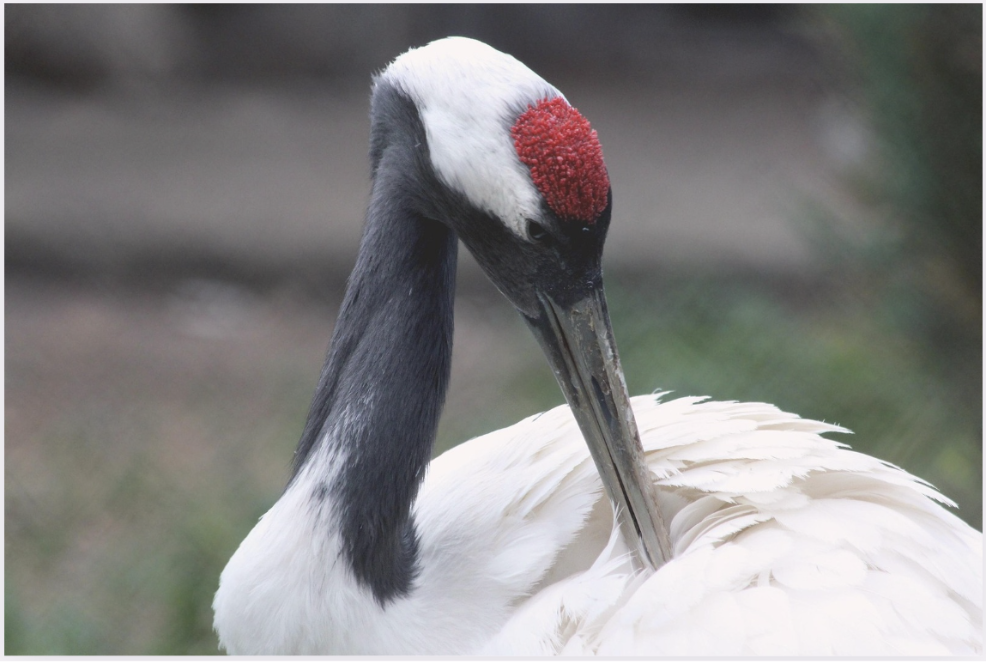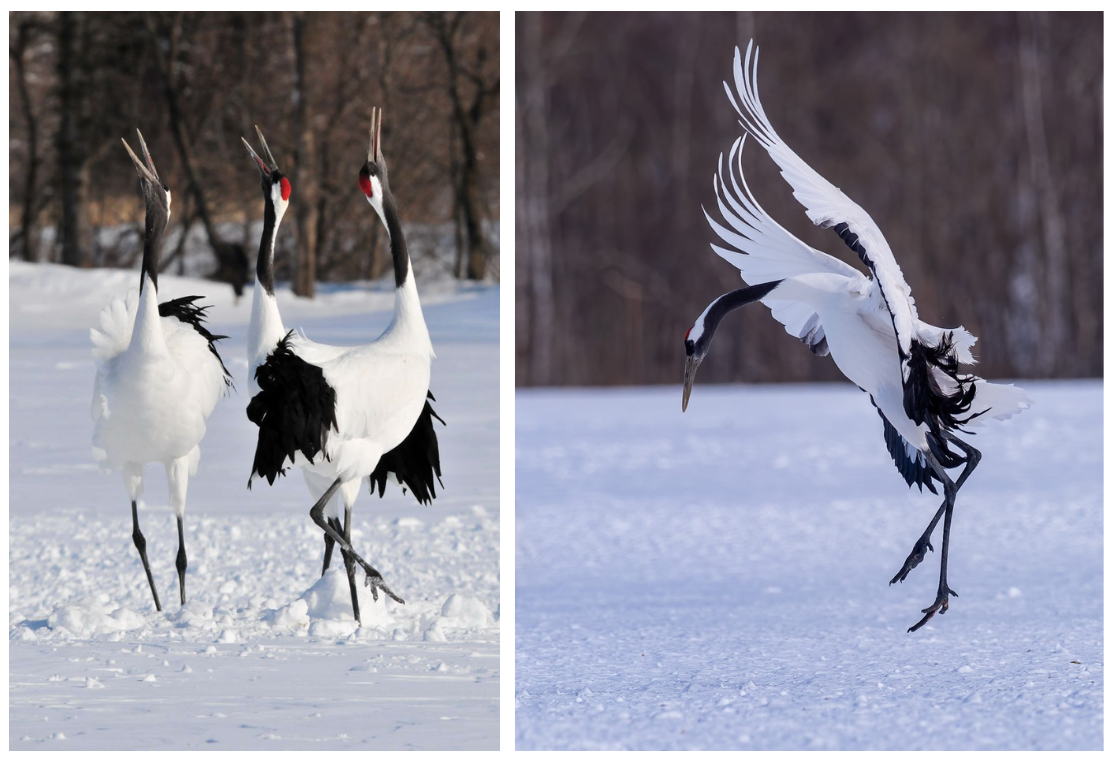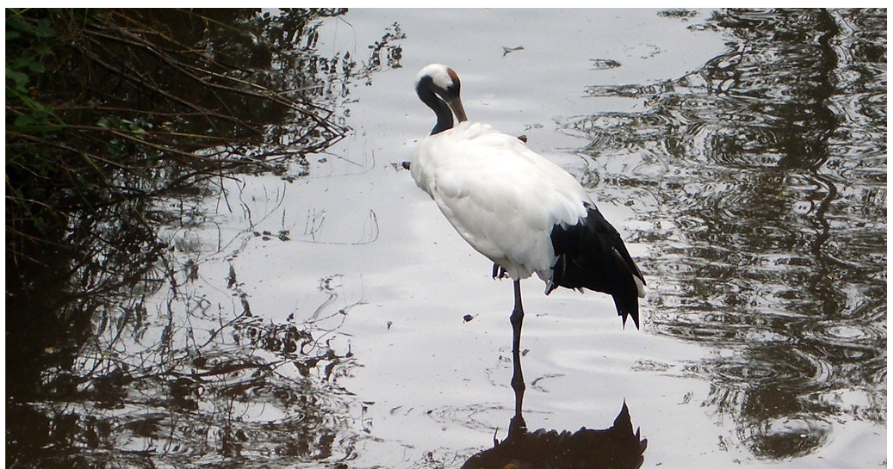
The Red-crowned Crane (Grus japonensis) is a wading bird from the Gruidae family, and one of its largest representatives.
It is considered a sacred bird in many cultures, notably because of the purity of its plumage and the elegance of its movements. It is called tanchō in Japan, which literally means “vermillion crown”, in reference to the distinctive red spot that adults have on the top of their head.

The Red-crowned Crane is a migratory bird inhabiting the cold regions of East Asia. Although it is closely associated with Japan, the species is not endemic to it. It can also be found in northeastern China and eastern Siberia. However, some cranes from Japan show the unique trait of not migrating, living in the country all year round.
Omnivorous in diet, the Red-crowned Crane is dependent on wetlands. In these environments, it finds all the food it needs: insects, crustaceans, fish, amphibians, and small mammals, but also buds and fruits of certain plants that only grow in these water-rich habitats.

Unfortunately, with the development of agriculture, the surface area of wetlands has greatly decreased in Japan. As its food sources became scarcer, the species naturally turned to the newly established crops. It then came to be seen as a pest, even though its hunting was historically prohibited.
In 1924, the species was declared extinct in Japan.

However, a dozen individuals were rediscovered a few years later in the Kushiro marshes, a vast wetland in Hokkaidō, the northernmost island of Japan. Feeding programs were established, and their population slowly grew to 33 individuals by 1950. Today, over 1,500 individuals inhabit Hokkaidō, mainly in the Kushiro marsh.
Saved from extinction in extremis, the Red-crowned Crane is now a symbol of resilience, showing that nature can recover if environmental conditions allow it.





